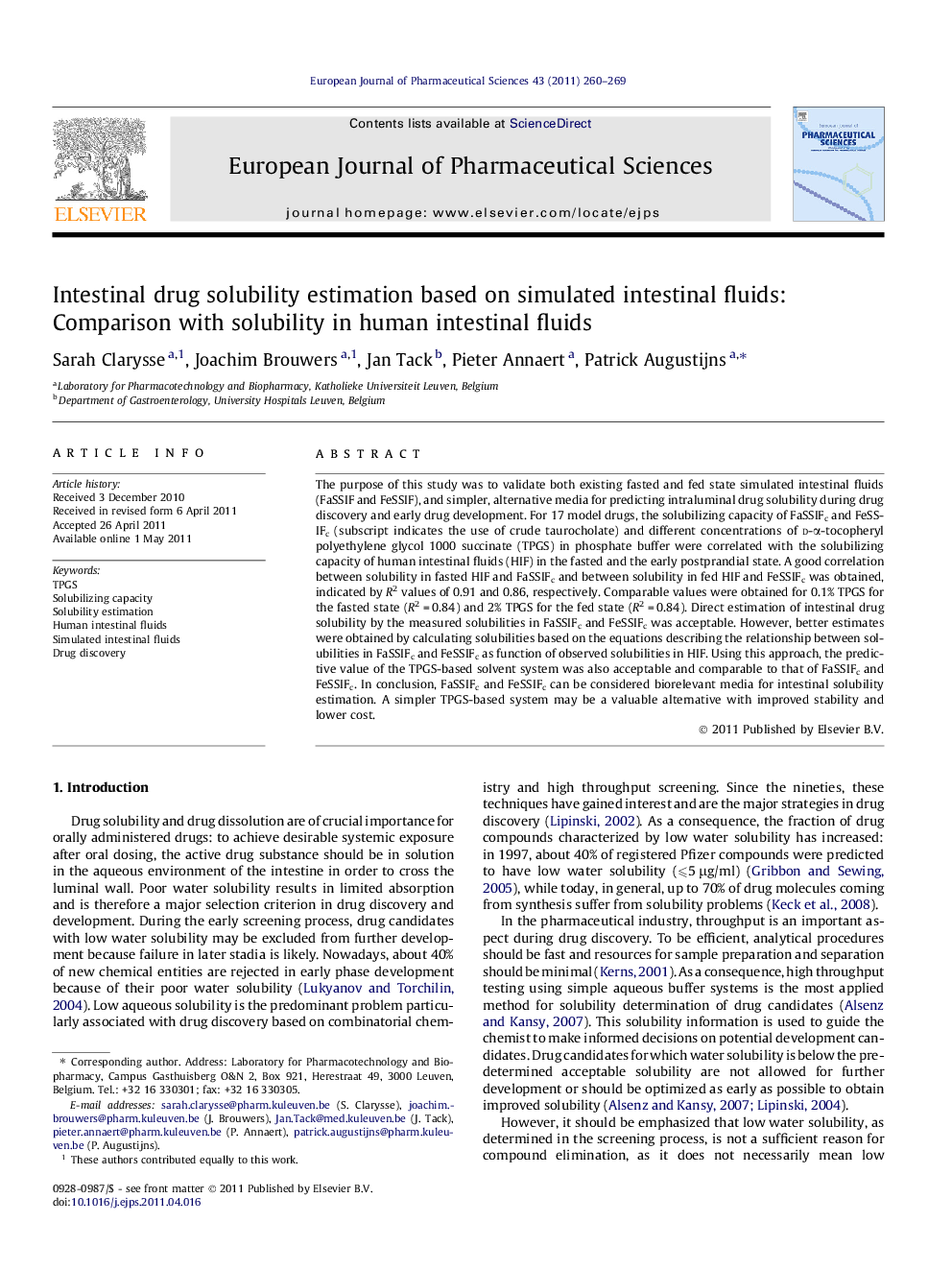| Article ID | Journal | Published Year | Pages | File Type |
|---|---|---|---|---|
| 2481634 | European Journal of Pharmaceutical Sciences | 2011 | 10 Pages |
The purpose of this study was to validate both existing fasted and fed state simulated intestinal fluids (FaSSIF and FeSSIF), and simpler, alternative media for predicting intraluminal drug solubility during drug discovery and early drug development. For 17 model drugs, the solubilizing capacity of FaSSIFc and FeSSIFc (subscript indicates the use of crude taurocholate) and different concentrations of d-α-tocopheryl polyethylene glycol 1000 succinate (TPGS) in phosphate buffer were correlated with the solubilizing capacity of human intestinal fluids (HIF) in the fasted and the early postprandial state. A good correlation between solubility in fasted HIF and FaSSIFc and between solubility in fed HIF and FeSSIFc was obtained, indicated by R2 values of 0.91 and 0.86, respectively. Comparable values were obtained for 0.1% TPGS for the fasted state (R2 = 0.84) and 2% TPGS for the fed state (R2 = 0.84). Direct estimation of intestinal drug solubility by the measured solubilities in FaSSIFc and FeSSIFc was acceptable. However, better estimates were obtained by calculating solubilities based on the equations describing the relationship between solubilities in FaSSIFc and FeSSIFc as function of observed solubilities in HIF. Using this approach, the predictive value of the TPGS-based solvent system was also acceptable and comparable to that of FaSSIFc and FeSSIFc. In conclusion, FaSSIFc and FeSSIFc can be considered biorelevant media for intestinal solubility estimation. A simpler TPGS-based system may be a valuable alternative with improved stability and lower cost.
